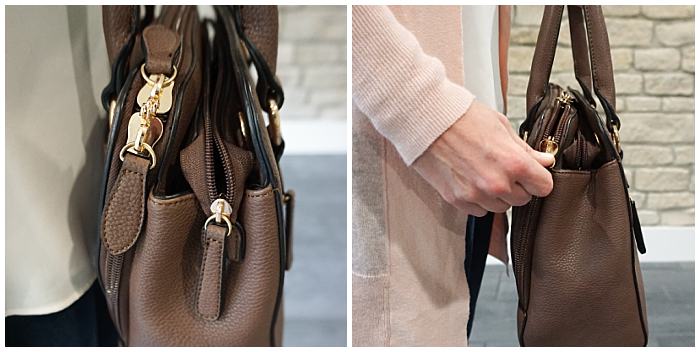How to Safely Draw Your Gun from a Concealed Carry Purse
Imagine the contents of your purse at this very moment. Could you reach your hand in without looking, and quickly pull out a specific item? Or, would you have to dig around to find it? When it comes to concealed carry, your life could depend on this skill!
One aspect of training with your concealed carry purse is to practice your draw. In a situation where fractions of a second count, the last thing you want is to fumble through your purse. The goal is to be smooth and consistent, gaining speed as your practice overtime.
When I first started practicing this seven years ago, I wanted to avoid forming bad habits; so I sought help from qualified NRA (National Rifle Association) instructors to learn the proper way to draw from a purse. They shared the four basic steps to drawing from a purse: Rip, Grip, Slap and Present. We'll, I’ve gained a lot more experience since then, so I wanted to update this blog to share more helpful information.
If you’ve never done this before, I recommend working with a trainer. You can also practice this with a dummy gun or unloaded gun to start building muscle memory.
Stage the bag
The angle at which you access your gun will vary depending on the type of gun pocket, type of strap, and which side of your body you carry the purse. So you’ll want to stage your bag in a way that gives you the easiest access and one way you can do this is by moving the holster.
Concealed carry purses are usually include a Velcro holster that can be re-positioned to the angle of your choosing.
If your gun pocket has dual zippers, this is an added bonus. You can slide them to the side of the purse that makes sense for you. It’s best to tug the zipper downward if that is an option, so in the picture above, I’ve adjusted my purse’s zipper to allow for this.
5 Steps: Zip, Grip, Rip& orient, Slap and Present!
Live fire training - Drawing from a concealed carry purse
In the following sequence, I’m using the Natalie concealed carry purse, which I designed and co-branded with Cameleon Bags! It has a center pocket for even weight distribution, and top access. The dual zippers provide a very wide opening. This gives plenty of space so you don’t scratch your hand when retrieving the gun.
Zip
Unless the gun compartment has a magnet enclosure, you’ll need to unzip your purse to access the gun. If the compartment has dual zippers, position them in a way that you only have to grab one zipper and pull over and downward.
Bypassing this step altogether can save precious time. So if you ever feel uneasy, walking with the pocket already unzipped and your hand on the gun is an option. For example, when walking through a dark parking garage.
Grip:
Be mindful of where the gun points when it’s inside the purse. Make sure when you grip the gun, it’s already facing the threat. You may need to pull the purse across your body to do this.
Keep your finger off the trigger until you’re ready to shoot.
Rip:
This step can look different depending on the type of purse you use, but the point is to clear your gun from the purse.
When carrying on your strong side- pull the gun out and then orient it towards the threat.
When crossing the purse over your body- The muzzle should already be pointing toward the threat while inside the purse. To clear the gun, think about ripping the purse away while keeping the gun pointed at the threat.
From there, you can either toss the purse to the ground or if it’s a crossbody purse, it will remain on your shoulder.
Please note: if you choose not to drop the bag and you keep it hanging on your arm, the extra weight will likely affect your accuracy.
Slap:
Quickly bring your second hand to the firearm, to complete a strong, two-handed grip. This is also known as “marrying” the hands.
Present:
Press the firearm out, extending your arms to your preferred shooting stance. From here, get a proper sight picture (line up the sites with the target) and take the shot.
*When learning to draw from concealment, one safety concern is making sure to keep your finger off the trigger until it’s time to shoot. So even when building speed, keep your finger off the trigger until this step!
Conclusion
Practicing your draw is a critical skill for anyone who carries a firearm for personal defense.
It’s normal to feel slow, disjointed and awkward at first, but stick with it! Go one step at a time, familiarizing yourself with each step, and then put them together at your own pace.
Remember, where there is consistency first, there can be speed later. With enough time and practice, your draw will become second nature, making you more confident and overall, safer.










